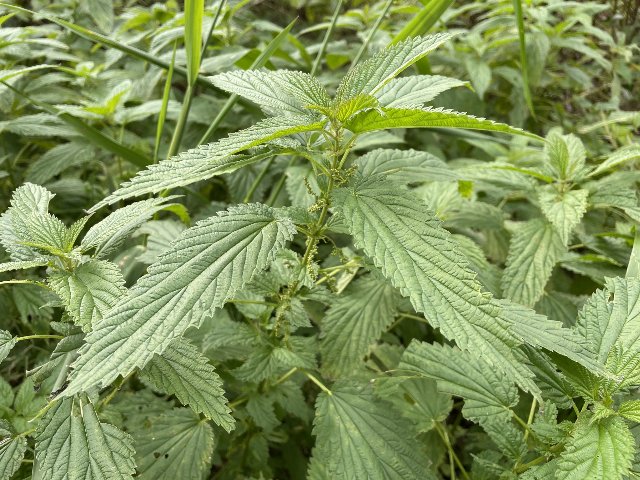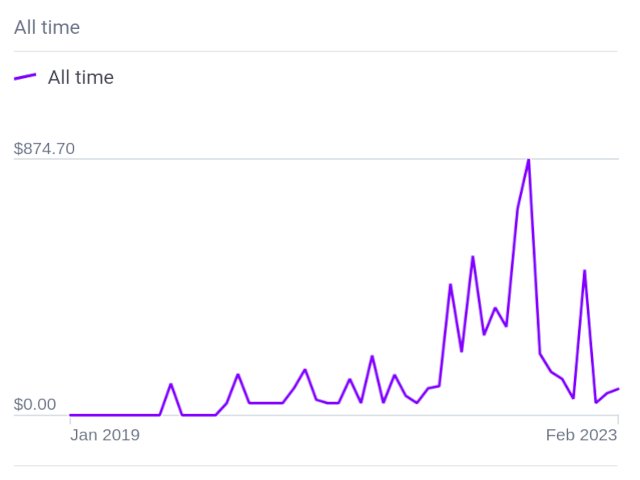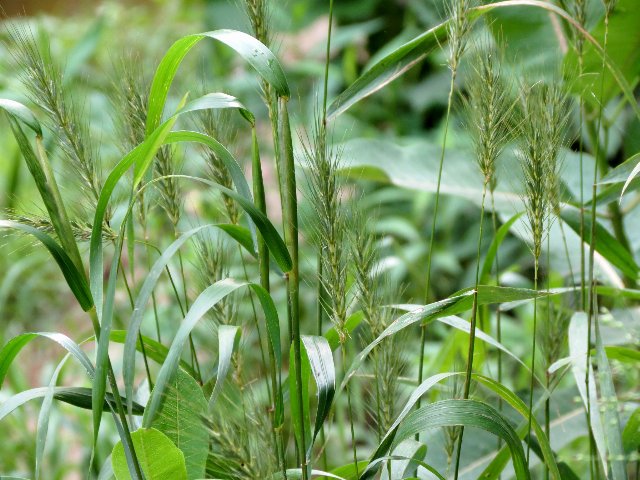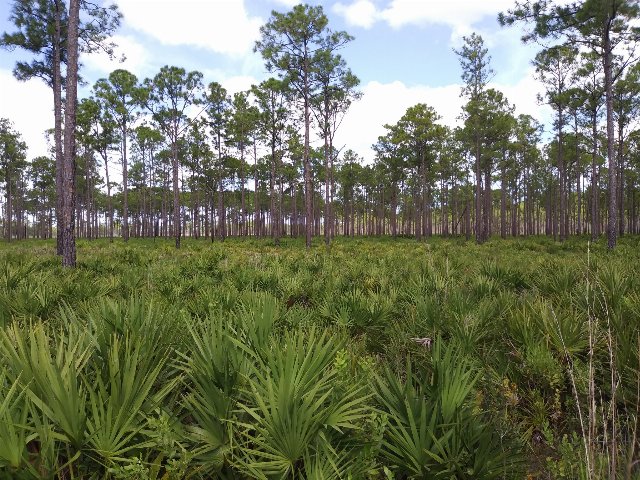2022 Year-End Summary: Successes & New Goals
February 15th, 2023 by Alex Zorach
2022 was a big year for us, with the launch of ecoregion-based plant lists and searches, interlinking with numerous websites and databases, and beginning the difficult work of bringing the taxonomy of the plants on our site up-to-date. In addition to starting new projects, we completed others, retiring our first-generation range maps and fully replacing them with our newer, better maps. We also had some major fundraising successes.On top of this we have been chugging away at other less-announced and behind-the-scenes progress, continuing to complete range maps for species that lack them, and continuing to link up records between our database and other databases for taxa that do not have a simple one-to-one correspondence between the records. As we do this, we are building tools that help this work to proceed faster and more smoothly.
 This photo shows a plant which we call American stinging nettle (Urtica gracilis); many sources however classify it as Urtica dioica ssp. gracilis; the inconsistent treatment complicates the interlinking of records, but we are making an effort to link up taxa with corresponding records that refer to the same populations, which may not match the same names we use. Just as this plant produces a painful sting if handled without gloves, some of the more messy taxa are able to produce a big headache!
This photo shows a plant which we call American stinging nettle (Urtica gracilis); many sources however classify it as Urtica dioica ssp. gracilis; the inconsistent treatment complicates the interlinking of records, but we are making an effort to link up taxa with corresponding records that refer to the same populations, which may not match the same names we use. Just as this plant produces a painful sting if handled without gloves, some of the more messy taxa are able to produce a big headache!Photo © Tom Scavo, CC BY 4.0, Source.
Fundraising Successes, But Still Far From Even Mid-Term Goals
In 2022 we more-than-tripled our number of donors, and nearly tripled our total revenue, which mostly came from donations. You can find more details on our 2022 financial statement.Although this growth is a major success and we would like to celebrate it, and we are very grateful to all our current supporters, we want to emphasize that we are still far from being able to pay even a single person a living wage. This website has been primarily a volunteer effort for years now, going back to 2018 before its launch, and we have achieved all our success with no funding beyond the donations and other minimal revenue displayed on our financial statements.
In order for this project to be sustainable and to realize its goals, we will need a lot more support than we are currently getting, so we would encourage you to continue giving, consider donating if are able to and have not yet done so, and perhaps also networking to recruit other donors.
 This graph shows both that last year marked a big increase in our donations, and that most of our donations came in during the growing season.
This graph shows both that last year marked a big increase in our donations, and that most of our donations came in during the growing season.Adjusting Donation Quantities for Inflation
Inflation has been high since we launced our donation system, and the costs for our infrastructure have increased, as well as general cost-of-living which has diluted the real value of donations. As such we have adjusted the recommended values for inflation, which amounts to an increase of +7%. You can see the new values on our donate page, which is always accessible in the top-right corner (in a hidden menu on mobile.) We will continue to update these values in the future. Existing subscriptions for recurring donation will not be affected, but we would appreciate it if you would update your subscription quantities as well. Unfortunately our system does not allow automatic inflation-adjustment of the quantities.You can edit your subscription by logging on, visiting your profile, then clicking the "Donations" tab. This option is currently only available for people who gave recurring donations; we have not yet launched user accounts for other donors but we may do this in the near future.
More ID/Comparison Guides
The ID/Comparison guides remain one of the most popular aspects of the site, perhaps due to filling a much-needed niche intermediate between the "hardcore" floras and dichotomous keys, and more accessible but sometimes-oversimplified popular sources that gloss over tougher aspects of plant ID. Although these guides are time-consuming to construct, we continue to prioritize them because plant ID is critically important in both ecological restoration as well as selection of plants for use in gardening and landscaping.In 2022 we started a total of 35 new plant ID guides, 15 of which are now completed, and we also completed other guides that were under construction. Our total number of published, completed guides is now 99.
Wildrye (Elymus) Guides
 This photo shows early wildrye (Elymus macgregorii), a species only described in 2000. Older keys will thus treat it as some other species, usually Virginia wildrye (Elymus virginicus). Photo © Katja Schulz, CC BY 4.0, Source.
This photo shows early wildrye (Elymus macgregorii), a species only described in 2000. Older keys will thus treat it as some other species, usually Virginia wildrye (Elymus virginicus). Photo © Katja Schulz, CC BY 4.0, Source.Among new guides we have started ID guides for the Elymus (wildrye) genus, which, in North America, are mostly native cool-season perennial bunchgrasses. So far we have completed:
- Riverbank Wildrye (Elymus villosus) vs. Silky Wild Rye (Elymus villosus)
- Early Wildrye (Elymus glabriflorus) vs. Southeastern Wildrye (Elymus glabriflorus)
- Canada Wildrye (Elymus riparius) vs. Riverbank Wildrye (Elymus riparius)
- Canada Wildrye (Elymus glabriflorus) vs. Southeastern Wildrye (Elymus glabriflorus)
- Early Wildrye (Elymus riparius) vs. Riverbank Wildrye (Elymus riparius)
Pine (Pinus) Guides
 This photo shows slash pines in a savanna in Florida. We have been moving southward and our ID guides are beginning to cover some more southern species. Photo by Daniel Estabrooks, Public Domain, Source.
This photo shows slash pines in a savanna in Florida. We have been moving southward and our ID guides are beginning to cover some more southern species. Photo by Daniel Estabrooks, Public Domain, Source.We also continued adding more pine ID guides, gradually moving towards the more southeastern pines:
- Loblolly Pine (Pinus strobus) vs. Eastern White Pine (Pinus strobus)
- Shortleaf Pine (Pinus taeda) vs. Loblolly Pine (Pinus taeda)
- Pitch Pine (Pinus taeda) vs. Loblolly Pine (Pinus taeda)
- Shortleaf Pine (Pinus strobus) vs. Eastern White Pine (Pinus strobus)
- Loblolly Pine (Pinus elliottii) vs. Slash Pine (Pinus elliottii)
Other Guides
In addition we added other random guides. For example, Rhomboid Mercury (Acalypha australis) vs. Asian Copperleaf (Acalypha australis) is useful for distinguishing a common native plant from an introduced plant that has been showing up on an increasing number of sites across North America, and may have potential to be invasive.Other random guides include:
- Annual Fleabane (Erigeron philadelphicus) vs. Philadelphia Fleabane (Erigeron philadelphicus)
- White Avens (Geum vernum) vs. Spring Avens (Geum vernum)
- Purpletop (Sorghum halepense) vs. Johnsongrass (Sorghum halepense)
- Wingstem (Verbesina occidentalis) vs. Yellow Crownbeard (Verbesina occidentalis)
- Norway Spruce (Picea orientalis) vs. Caucasian Spruce (Picea orientalis)
Thank you for your interest and support!
Archive of All Blogs
The Bias Against Tall Plants, November 11th, 2025
A Focus on Goldenrods (Solidago sp.), July 23rd, 2025
Disturbance and its Role in Plant Habitat Preferences, May 29th, 2025
What "Native" or "Introduced" Mean: Myths and Misconceptions, March 11th, 2025
Smarter & More Informative Search Results, January 13th, 2025
The Effect of the 2024 US Election on Plant Biodiversity and bplant.org, October 30th, 2024
The Problems With Nursery-Bought Plants, And The Solutions, October 8th, 2024
More Databases Linked & Search Improvements for Scientific Names, July 9th, 2024
Choosing The Best Common Names For Plants: Challenges & Solutions, April 19th, 2024
Range Map & Taxonomic Update Progress, January 31st, 2024
Giving Thanks To Everyone We Rely On, November 22nd, 2023
Thinking More Deeply About Habitat, April 5th, 2023
2022 Year-End Summary: Successes & New Goals, February 15th, 2023
New Databases Linked: Flora of North America & NatureServe Explorer, November 11th, 2022
All Range Maps 2nd Generation, Taxonomic Updates, & Fundraising Goal Met!, September 29th, 2022
More Range Map Improvements, POWO Interlinking, And Notes Fields, June 7th, 2022
Ecoregion-Based Plant Lists and Search, March 30th, 2022
Progress Updates on Range Maps and More, February 10th, 2022
The Vision for bplant.org, December 9th, 2021
New Server: Software & Hardware, August 30th, 2021
More & Improved Plant Range Maps, July 19th, 2021
A Control Section for Invasive Plants, April 15th, 2021
Progress Bars & State Ecoregion Legends, March 11th, 2021
Our 2020 Achievements, February 9th, 2021
Interlinking Databases for Plant Research, November 11th, 2020
A New Homepage, Highlighting Our Articles, July 29th, 2020
A False Recovery, But North Carolina's Ecoregions are Complete!, June 9th, 2020
We're Back After COVID-19 Setbacks, April 3rd, 2020
Help Us Find Ecoregion Photos, February 27th, 2020
What We Achieved in 2019, December 30th, 2019
Plant Comparison and ID Guides, October 30th, 2019
We Are Now Accepting Donations, October 14th, 2019
US State Ecoregion Maps, New Footer, Ecoregion Article Progress, and References, September 19th, 2019
Tentative Range Maps of Native Plants, August 12th, 2019
Ecoregion Locator and Interactive Maps, July 10th, 2019
Using Ecoregions Over Political Boundaries, May 13th, 2019
How We Handle Wild vs Cultivated Plants, April 16th, 2019
A Blog To Keep People Updated On Our Progress, April 8th, 2019
Sign Up
Want to get notified of our progress? Sign up for the bplant.org interest list!


